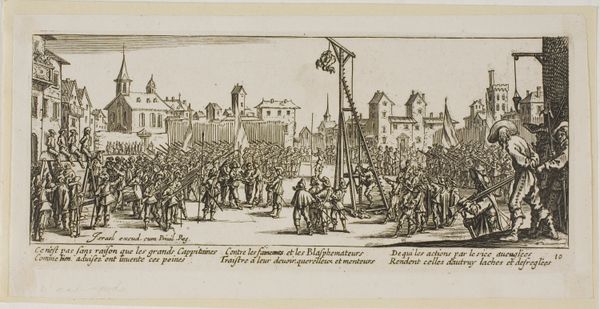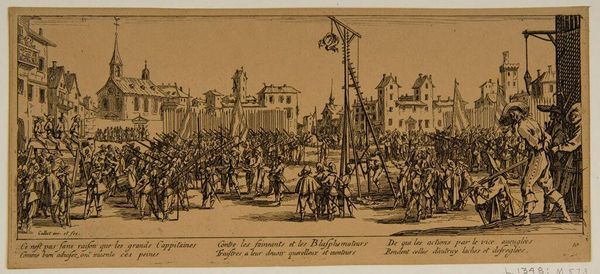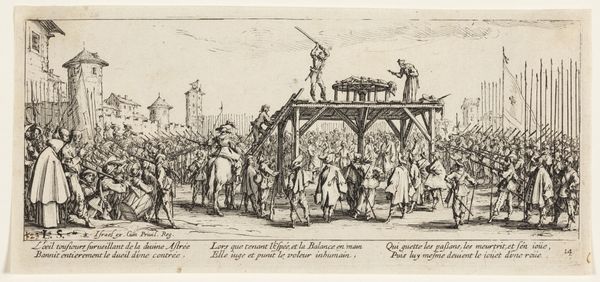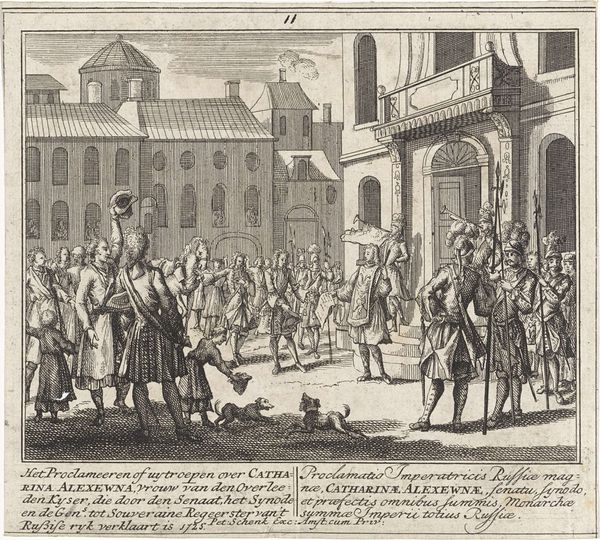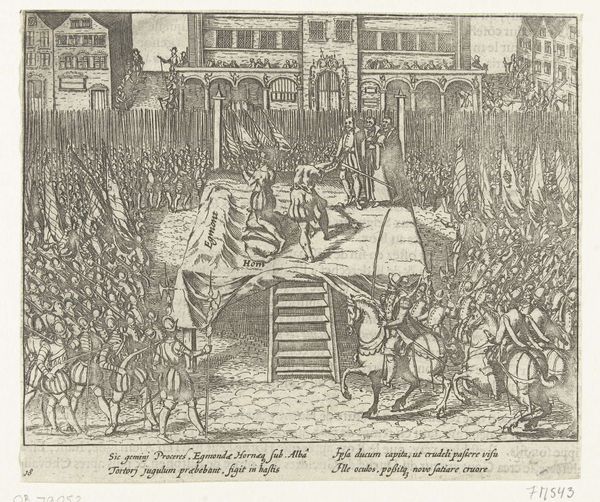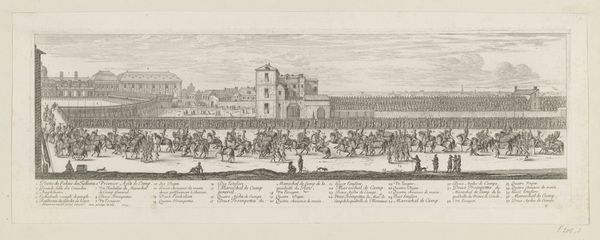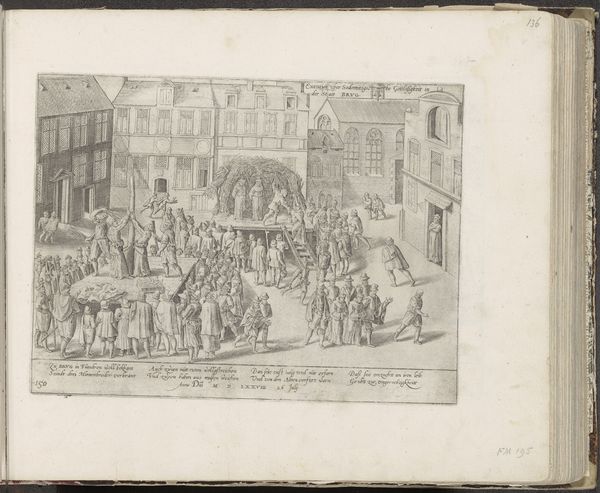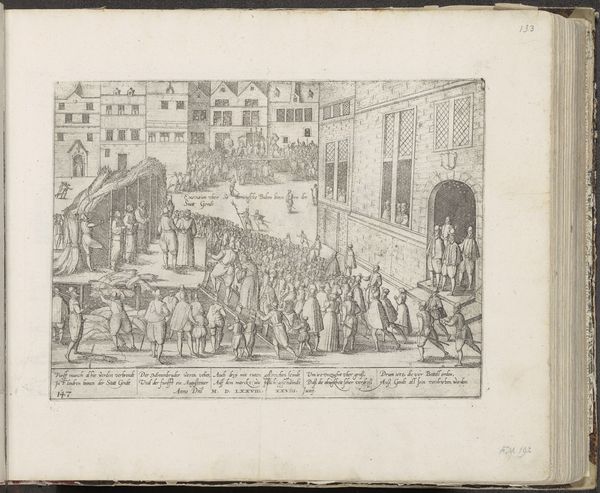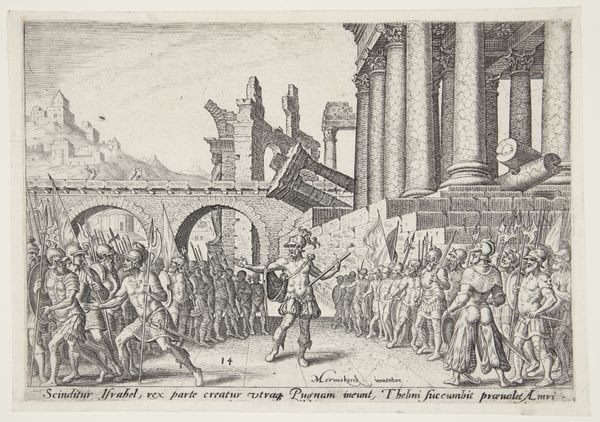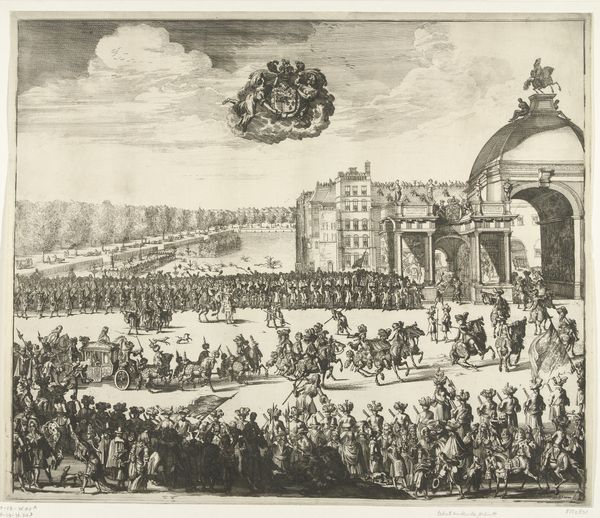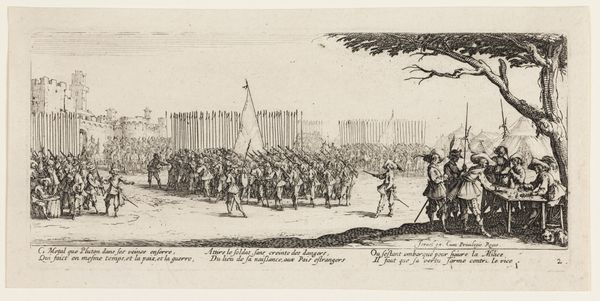
print, engraving
#
baroque
# print
#
cityscape
#
history-painting
#
engraving
Dimensions: 83 mm (height) x 188 mm (width) (plademaal)
Curator: Jacques Callot's 1633 engraving, "Afstraffelse med vippegalge", currently housed at the SMK - Statens Museum for Kunst, presents a detailed cityscape teeming with activity, but what strikes you first? Editor: The overwhelming impression is one of dread. The stark contrast of the monochrome medium—engraving—lends a severity to the scene. The gallows loom large in the middle ground, creating an unsettling focal point amidst the busyness. Curator: Precisely. This piece falls squarely within the Baroque period. Callot was known for depicting large-scale scenes with remarkable detail, often focusing on military or religious events. Here, he showcases a public execution, a grim, but regular aspect of 17th-century life. Note the artist’s keen rendering of social structure; it offers an important commentary on authority and public power. Editor: Visually, the composition guides your eye from the procession on the left towards that central gallows, creating a deliberate sense of build-up, and then to the brutal event taking place to the right, where another person is seemingly getting beaten down in some manner. The architectural details, while intricate, almost fade into the background. It is clearly the foreground that dominates the entire visual meaning. The repetition of figures creates a sense of overwhelming uniformity as well. Curator: And what is particularly noteworthy is that Callot created this image in Lorraine during the Thirty Years' War, a time of immense social and political upheaval. It's fascinating to think how the context informs our perception of public order and punishment during times of intense conflict. This execution may be considered routine punishment; or is it a representation of public anger being manipulated by an unjust system? Editor: I concur; Callot very cleverly employs perspective to emphasize this inherent tension. By making the viewer observe this "distant" but centrally dominating spectacle from a flattened pictorial plane, the artist intensifies the chilling atmosphere of cruelty while the presence of legal documentation offers its implied authorization. It does feel staged and highly impersonal in this arrangement of dark shapes and tones. Curator: Seeing this work offers such great perspective, and the details in this small print provoke so many important conversations. Editor: Indeed. Its formal design choices only serve to enhance our understanding of social practice at that moment in European history.
Comments
No comments
Be the first to comment and join the conversation on the ultimate creative platform.
